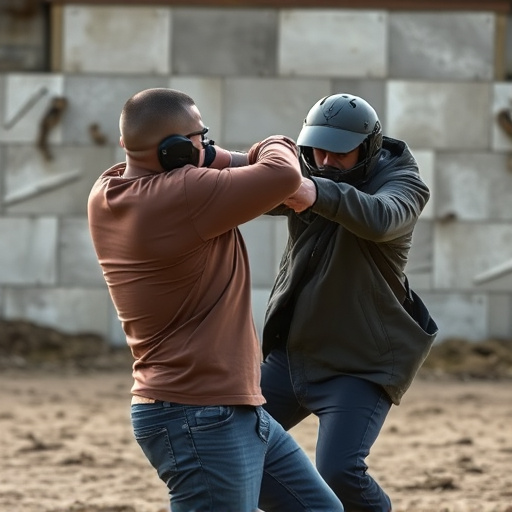OC spray, using capsaicin (chili pepper compound), is a non-lethal self-defense tool effective against attackers. Concentration levels (1% to 5%) determine potency, with higher levels offering better protection but potential side effects. Balanced at 2% for everyday carry, reaching 10% for law enforcement. Legal restrictions vary globally, requiring understanding of local laws and proper usage guidelines.
“Discover the power of oleoresin capsicum (OC) spray as a personal defense tool. This comprehensive guide delves into the science behind OC spray, exploring how capsaicin concentration levels determine its effectiveness against potential threats. From understanding the chemical composition to navigating legal considerations and choosing the right spray for your needs, this article equips you with vital knowledge. Elevate your self-defense strategy with OC spray, a game-changer in personal safety.”
- Understanding OC Spray: A Comprehensive Guide
- Capsaicin Concentration: The Key to Effectiveness
- How OC Spray Works Against Potential Threats
- Legal Considerations and Usage Restrictions
- Choosing the Right OC Spray for Personal Defense
Understanding OC Spray: A Comprehensive Guide
OC Spray, or Oleoresin Capsicum (OC) spray, is a non-lethal self-defense tool that has gained significant popularity for its effectiveness and relatively low risk profile compared to other force options. It works by delivering a powerful irritant, capsaicin, directly into the eyes and respiratory system of an attacker. This chemical compound is the same substance responsible for the heat sensation in chili peppers, making OC spray a potent deterrent.
The key to understanding OC spray’s effectiveness lies in its capsicum concentration levels. These are measured in percent capsaicoid content (PCC), with higher percentages indicating greater potency. Standard OC sprays typically contain 1% to 2% PCC, while more powerful options can reach up to 10%. The right balance ensures that the spray is effective enough to disable an assailant without causing permanent harm or leaving victims vulnerable to long-term health issues, making it a preferred choice for personal defense and law enforcement applications alike.
Capsaicin Concentration: The Key to Effectiveness
The effectiveness of oleoresin capsicum (OC) spray as a defense tool heavily relies on its capsaicin concentration levels. Capsaicin, the active ingredient in chili peppers, is responsible for the spicy sensation and the powerful effects of OC spray. The concentration, measured in percent or parts per million (ppm), determines the intensity of the spray’s impact.
Higher capsaicin concentrations, typically ranging from 1% to 2%, ensure that a smaller amount of spray is needed to incapacitate an attacker temporarily. This makes OC spray a game-changer for personal defense, as it can create a significant deterrent with just a few bursts. However, maintaining safety standards and proper usage instructions is crucial when dealing with such potent concentrations to avoid any adverse effects on users or bystanders.
How OC Spray Works Against Potential Threats
OC spray, a potent defense tool, works by deploying capsaicin, the active ingredient found in chili peppers, at specific concentration levels. When activated, the spray creates a cloud of capsicum that irritates the eyes, nose, and respiratory system of potential threats. This immediate sensory overload disrupts an attacker’s balance and visibility, providing the user with crucial time to escape or defend themselves.
The effectiveness of OC spray lies in its capsaicin concentration levels, typically ranging from 2% to 5%. This concentration is designed to cause temporary yet intense discomfort, enabling users to disable an assailant without causing permanent harm. The high volatility and low odour of modern OC sprays ensure a fast-acting and discreet response to threats, making them popular choices for personal defense and law enforcement applications.
Legal Considerations and Usage Restrictions
The usage of oleoresin capsicum (OC) spray as a defense tool is regulated by various legal frameworks designed to balance personal safety with public safety and privacy. The legality and restrictions vary significantly by jurisdiction, with some countries allowing its use for self-defense while others have strict controls or outright bans. One key factor is the capsaicin concentration levels permitted in these products; higher concentrations can be more effective but also pose greater risks.
End users must understand and comply with local laws to avoid legal repercussions. In many places, OC spray can only be possessed and used by licensed individuals, such as law enforcement or security personnel, who have undergone specialized training. Civilian use is often restricted to specific situations where traditional self-defense options are inadequate, and proper documentation and registration of the device may be required.
Choosing the Right OC Spray for Personal Defense
When selecting an oleoresin capsicum (OC) spray for personal defense, understanding capsaicin concentration levels is paramount. These concentrations are measured in percent and indicate the potency of the pepper spray. Higher percentages offer more protection but also come with increased likelihood of skin irritation and temporary blindness. Therefore, it’s crucial to strike a balance between power and safety based on your needs.
Factors like intended use, target threat level, and individual sensitivity should guide your choice. For everyday carry or general personal defense, an OC spray with 1% to 2% capsaicin concentration is recommended. This range delivers effective deterrence without causing excessive discomfort. Higher concentrations, such as 5% or more, are better suited for professional applications like law enforcement or security, where powerful neutralization is a priority.
OC spray, a powerful personal defense tool, has proven its effectiveness through capsaicin concentration levels that disrupt and deter potential threats. Understanding the mechanisms behind how OC spray works, along with legal considerations and choosing the right product, ensures its responsible use as a means of self-defense. With the right knowledge and equipment, individuals can protect themselves in various situations, emphasizing the importance of informed decision-making when it comes to personal safety.
